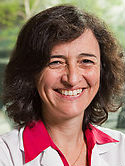Transdisciplinary management in geriatric oncology Book Section
| Authors: | Sun, S. W.; Alexander, K.; Korc-Grodzicki, B. |
| Editor: | Tan, K. Y. |
| Article/Chapter Title: | Transdisciplinary management in geriatric oncology |
| Abstract: | As a result of declining fertility and mortality rates, the world is experiencing an aging of its population (Fig. 13.1). According to the UN, the proportion of older adults (60 years and older) comprised 11% of the world population in 2009 but will represent 22% by 2050 (2014). Due to advances in public health and medicine in just the past 100 years, life expectancy for the average person in Europe, North America, Japan, and other industrialized countries has increased by more than 50%. Adults in these societies can reasonably count on living into their 80s and 90s. As cancer occurs more commonly in the older adults, this shift is expected to markedly increase the number of cancer diagnoses. Cancer is diagnosed at a higher rate (53%), accounts for a higher percentage of survivors (59%), and results in more deaths among individuals 65 years and older (68%) compared with younger adults (Hurria et al. 2013). Minorities and older adults represent important population groups that may be particularly vulnerable to suboptimal cancer care, because both groups have been underrepresented in cancer clinical trials (Hutchins et al. 1999) and are also subject to disparities in treatment (Bouchardy et al. 2007; Gross et al. 2008). Colorectal cancer is and will continue to be one of the three leading cancer sites in the year 2030 in both men and women (Smith et al. 2009). Bowel cancer mortality is strongly related to age. In the UK between 2009 and 2011, an average of 57% of bowel cancer deaths occurred in men and women aged 75 years and over (2014). © Springer-Verlag Berlin Heidelberg 2015. |
| Book Title: | Transdisciplinary Perioperative Care in Colorectal Surgery: An Integrative Approach |
| ISBN: | 978-3-662-44019-3 |
| Publisher: | Springer Berlin Heidelberg |
| Publication Place: | Heidelberg, Germany |
| Date Published: | 2015-01-01 |
| Start Page: | 189 |
| End Page: | 198 |
| Language: | English |
| DOI: | 10.1007/978-3-662-44020-9_13 |
| PROVIDER: | scopus |
| DOI/URL: | |
| Notes: | Book Chapter: 13 -- Export Date: 2 November 2015 -- Source: Scopus |
Altmetric
Citation Impact
BMJ Impact Analytics
MSK Authors
-
 130
130Korc-Grodzicki -
 14
14Sun -
 54
54Alexander
Related MSK Work


